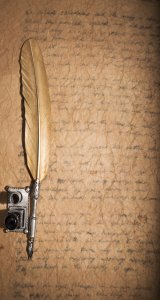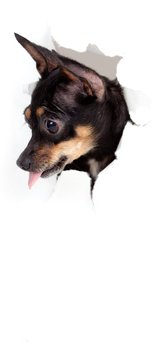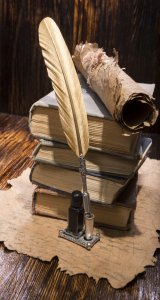Photography 101 Part 1
Photography 101
Part One
Equipment: camera, meter, flash, tripod
This article is a simplified photography course directed at new photographers out there who want to know where to start.
If you really want to learn photography the first thing you need is a good affordable and reliable camera. It must, and I repeat must, be able to shoot in fully manual and fully auto focus modes. (This leaves out any digital cameras on the market right now, sorry.) To really learn photography you must understand the equipment. You'll need to learn how manipulating the shutter speed, aperture, and focus will have a dramatic effect on your photos. Meters, if you have a camera that can work in a fully manual mode it should have an internal meter suitable for what you will be doing. Tripod, you're going to need one whether it's portrait work or landscapes you'll need one eventually. Luckily you don't have to spend a lot here. Just something lightweight and durable. Flash, you can buy a separate camera mounted flash, which is great if you can afford it. Consider what kind of photography that you will be doing though. If you're going to do mostly nature and landscape, you may only need the fill flash that comes with most cameras today. If you plan on doing portraiture alone you will want to consider a camera mounted flash that has an adjustable angle.
Film, film speed to be exact. Slower speeds (25 to 400) are intended for portraiture and landscape photography. Faster speeds (600 and above) are intended for actions shots and photojournalism. So first you need to know what you going out to photograph and make sure that you have the appropriate film for the job.
Now that you have the camera loaded with film consider shutter speed. Do you want to blur motion, or freeze it? If there is no motion at all what shutter speed do you need to expose the scene with natural light. From 1/60th and down to the bulb setting will blur most motion. For example if you want to blur the water in a waterfall, a setting of 1/30th should work. (You'll need a tripod though.) 1/125th is a normal setting for most shots. On many cameras the 125th setting is marked in a different color to make it obvious. If you want to freeze action you'll need to start with 1/500th and work up from there. The faster the motion the faster the shutter speed needed to stop motion. Many cameras go up to 1/2000th of a second. If you're trying to use natural light alone in a scene you will want to determine the aperture first and then see what shutter speed you need to properly expose the scene for available light. (Keep in mind sometimes there isn't enough light.)
Aperture, these are the set of numbers on your lens closest to the body of the camera. They can go from 1.8 to 22, and they are referred to as F-stops. These numbers determine how much light reaches the film inside of your camera. Most internal meters will blink on the appropriate aperture for the shutter speed that you've set, or the speed you've set will blink if your F-stop is correct for the speed. Both the F-stop and shutter speed can be changed to expose the scene correctly. Consider that the faster the shutter speed the more light will be needed to expose the scene correctly. This makes logical sense if you think about it. If the shutter isn't open as long, fast shutter speed, then there is less light able to make it to the film and so the scene must be brighter to expose correctly. To learn, bracket your shots. Take the first shot at the aperture suggested by your meter, move one stop up, take a photo, one down, take another photo.
Flash, I personally like shooting with natural light whenever possible and at most I use a fill flash. But if you're going to do portrait work then most of the time you may be indoors and you will need a flash sometimes. For the amateur the fill flash units that are on the top of most of today's cameras are wonderful for basic work. You will have to read your manual on your particular flash unit to learn what it can and can't do. This is where the camera that is fully manual and fully auto is great for the amateur. You can usually set it so that the camera will meter and set the flash output accordingly and then you still can control the shutter speed and aperture.
This week's assignment: Have several rolls of 400 speed film, find a subject that you can work with preferably something that won't move, and shoot one roll of film. Shoot some of the roll in the morning, afternoon, and evening. Bracket every shot, take notes on time of day and light conditions, and what your settings (aperture) were for each frame, keep the film speed the same for the entire roll. Have the film developed and examine the photos. You should be able to see a difference in each frame. You'll need to repeat this procedure until you feel that you understand the relationship between shutter speed and aperture, and every camera and meter has it's own quirks and differences, you're camera will act differently than someone else's. This way you will learn you own particular camera as well. Once you have a sense of how aperture works you won't need to bracket every shot you take, you may only need to do it in cases where you want to be extra safe on exposing the subject correctly.
If you have some specific questions please visit my Photography Forum at: http://kellypaalphotography.com/v -web/bulletin/bb/index.php
Copyright 2004 Kelly Paal
Kelly Paal is a Freelance Nature and Landscape Photographer, exhibiting nationally and internationally. Recently she started her own business Kelly Paal Photography (www.kellypaalphotography.com). She has an educational background in photography, business, and commercial art. She enjoys applying graphic design and photography principles to her web design.
|
|
|
|
|
|
|
|
|
|
|


Online Photo Sharing: Not Just for Family and Vacation Photos
You may have joined the photo-sharing craze to share your... Read More
How a Digital Camera Works
The digital camera is not something of a magic box... Read More
Diffusion & Softening of Digital Photography Images
Like many people who've made the switch from film cameras... Read More
Photography - Rules of Composition
Composition is defined as the combining of distinct parts or... Read More
Photography Business: Taking Baby Photos - for Professionals & Families
Babies make the best and the worst subjects to photograph.... Read More
Elephants in the Sky and Four Poems
Elephants in the Sky[1980s, Lee Evens in Mali, Timbuktu/Africa]Advance: Lee... Read More
Using a Camcorder to Record Family Events Quickly and Easily
Let's start there (but not spend too much time on... Read More
Digital Cameras Demystified
Demystifying Digital Camera JargonWant to buy a digital camera but... Read More
8 Simple Tips for Taking Great Baby Photos
Taking pictures of your new baby is a great way... Read More
Where Do Great Ideas Come From?
At a Photo Club meeting I attended recently, the President... Read More
Is your Digital Camera Compatible With Your Computer?
So you recently bought a digital camera or perhaps your... Read More
Digital Camera Macro Mode
The digital camera is a wonderful device that allows a... Read More
Photography Workshops and Master Classes
Several years ago, I met a fellow photographer - albeit,... Read More
Digital Camera Interpolation Explained
In a device such as a digital camera it is... Read More
Digital Image Files ? Megapixels, Megabytes, or DPI?
When I promised readers that I was going to do... Read More
Photography 101 Part 3
ContentEven if you feel that you already know what kind... Read More
The Mysterious Powerful Element of a Picture That Sells
A photo buyer calls for a picture of pigs. It... Read More
Traveling to Europe with Your Digital Camera?
The Vacation Season is fast approaching and naturally you will... Read More
Imperfect Photos And How You Can Fix Them
So your picture came out less then perfect. Blemishes or... Read More
Kodak CX7300 Digital Camera
Quality digital cameras are becoming affordable for just about everyone... Read More
Photography Success Without School
What I learned from a mentor that enabled me to... Read More
Becoming A Digital Artist On A Budget
So, you want to become a digital artist but paying... Read More
Black and White is Beautiful
Think about Laurel and Hardy for a moment, or Charlie... Read More
Bracketing and How To Use Tt Correctly...
What Is... Exposure BracketingExposure bracketing is a simple technique professional... Read More
Types of Digital Cameras
If you are in the market to purchase a digital... Read More
Inspired Vision
A picture is worth a thousand words, so goes a... Read More
Let Those Digital Photos Out! (You Don?t Have To Print Them Yourself)
What have you done with the photos you've taken with... Read More
Removing Spot Scratches in Your Treasured Photos ? 5 Minute Digital Fix
Probably one of the most common problems you will be... Read More
Photography Has No Gender
Women photographers are fortunate. Unlike other titles, photographer has no... Read More
History of the Camera
Early cameras of the 16th and 17th century were able... Read More
Tips for Better Vacation Photos
Photos are a great way to share your travel experiences... Read More
Taking Professional Quality Pictures
By now I'm sure you've used Either a digital or... Read More
Help! My Old Colour Photo has Turned Pink ? 5 Minute Digital Fix
Almost all of us will have seen this particular photographic... Read More


Photography 101 Part 1
Photography 101 Part One Equipment: camera, meter, flash, tripod This... Read More
Take Spectacular Nighttime Photos with your Digital Camera - Part I
Night photographs express a special something that cannot be seen... Read More
Digital Image Files ? Megapixels, Megabytes, or DPI?
When I promised readers that I was going to do... Read More
Should You Print Your Digital Photos at Home or Use a Photo Printing Service?
There are lots of options available for getting your digital... Read More
Selecting Your First Digital Camera
Purchasing a digital camera is a wise decision, particularly if... Read More
Digital Camera Basics
Digital Camera Basics? The VocabularyShopping for a digital camera can... Read More
Photography 101 Part 2
Basic CompositionNow that you are beginning to understand how your... Read More
The Primer on Digital Camera Printers
Once you have clicked photos through your digital camera, then... Read More
Photographs Everywhere, But Is It Really Art?
I once heard a lady say to a photographer that... Read More
Digital RAW Workflow for Beginners
Having an efficient work flow is essential for photographers. In... Read More
Digital Camera Memory Cards
A digital camera accessory you should purchase is a spare... Read More
CCTV Camera Tip: Apply Simple Common Sense when Picking CCTV Cameras and Lenses
Get a good face shot: Use Higher quality cameras at... Read More
Sepia Toned Prints from Your Colour or Black and White Photos ? 5 Minute Digital Fix
Quite often I will have clients bring in old photographs... Read More
Imperfect Photos And How You Can Fix Them
So your picture came out less then perfect. Blemishes or... Read More
Review of the Photek Product Shooting Tent
Here's the challenge. You have to photograph small items for... Read More
Traveling to Europe with Your Digital Camera?
The Vacation Season is fast approaching and naturally you will... Read More
How To Reduce Red Eye The Easy Way With Any Pro Or Point & Shot Camera
There is one simple technique any body can do to... Read More
How to Buy a Digital Camera
Are you buying your first digital camera? Well, you must... Read More
Infrared Photography and the Car Thief ? Successful Digital Imaging
Infrared photography is sometimes placed on the outside edge of... Read More
The Best Wildlife Camera To Take On Safari
Good wildlife camera equipment on safari can make the difference... Read More
Safari Wildlife Photography Top Four Tips
I've been practising wildlife photography on safari for over twenty... Read More
Take Spectacular Nighttime Photos with Your Digital Camera - Part II
Night photos can take on a somewhat magical quality you... Read More
Everybody is Fixing Their House or Apartment Up These Days. Use That Digital Camera to Capture
That's right, you go through all the trouble of making... Read More
Keep a Digital Photos Diary
Digital Photo Diary - memories that last a life timeThe... Read More
Where Do Great Ideas Come From?
At a Photo Club meeting I attended recently, the President... Read More
Get Closer to Your Subject
Almost any shot will look better if you take two... Read More
The Truth About Pixels - Part I: Digital Cameras
Most digital cameras today boast of greater resolution and picture... Read More
The Mysterious Powerful Element of a Picture That Sells
A photo buyer calls for a picture of pigs. It... Read More
Digital Imaging Explained
Digital Imaging is a process where an electronic photograph, scanned... Read More
Inspired Vision
A picture is worth a thousand words, so goes a... Read More
Digital Camera Printers
The digital camera is not meant only for capturing images... Read More
Diffusion & Softening of Digital Photography Images
Like many people who've made the switch from film cameras... Read More
Market Your Photography Business
Setting up your own photography business it easy, you don't... Read More
Photography |